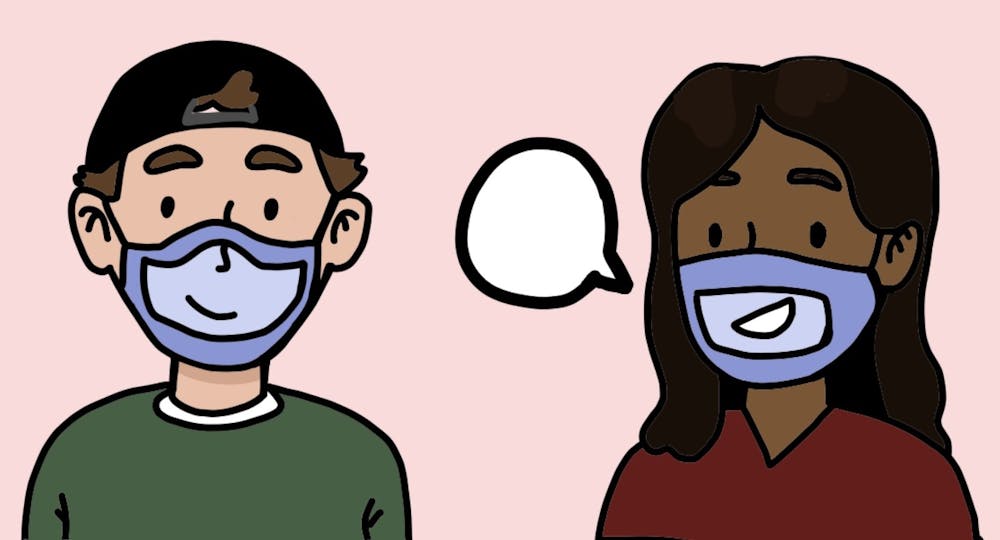One in four American adults has a disability, according to the CDC. Given the prevalence of disability and chronic illness in the United States, the coronavirus pandemic has magnified the inequalities in accessibility that persist in U.S. society. These disparities are reflected in a higher coronavirus mortality rate for those with disabilities, but also in the everyday barriers that those with disabilities experience, such as difficulties with lip-reading because of mask-wearing and remote therapy services. While these statistics are cause for concern in and of themselves, the disabled and chronically ill also encounter a plethora of pandemic-related challenges on a daily basis.
Assoc. Prof. of Education Lysandra Cook has dedicated the past two decades to teacher preparation for special education. Cook observed that while racial and economic disparities in the United States have been more obviously exposed through this pandemic, discrepancies in accessibility are also common.
“I think the pandemic, if anything, has highlighted so many injustices in our society at large,” Cook said.
From her experience working with families impacted by disability, Cook observed the struggle of providing services such as speech therapy, counseling and occupational therapy in a remote or asynchronous setting. In most cases, the responsibility lies with the families of those with disabilities to replicate these therapies within their own homes.
Cook also mentioned that the combination of working from home while monitoring asynchronous learning activities for a child with special needs adds a layer of complexity to social isolation.
“Usually, you get some respite in your day, and if you're the only caregiver in the home, it's really challenging,” Cook said.
Due to the fact that there is a large range of disabilities and chronic illnesses, individual pandemic obstacles vary widely. For example, Christopher Krentz, associate professor in the English and American Sign Language program, noted that mask-wearing during the pandemic poses a challenge to the deaf and hard-of-hearing who rely on reading lips.
“What can people do?” Krentz said. “Well, there are clear masks, but I think it's something that isn't quickly resolved.”
While clear masks — in which the portion of the mask covering the mouth is made up of a see through plastic covering — are designed to allow for lip-reading, when such masks are not available or widely used, the alternative is removing the personal protective equipment altogether, which is less than ideal.
Despite newfound challenges faced by those with disabilities, the transition to virtual social and work environments is a double-edged sword. For some chronically ill and disabled, the online format provides a new level of freedom, as physical barriers to entering a building for work or school dissolve in the online arena.
“So many institutions wouldn't allow for remote work [prior to the pandemic], and for some people with disabilities, it's a huge bonus to be able to work from home, to be able to control your environment [and] to not be impeded by lack of access to buildings,” Cook said.
In contrast, working on a computer poses a physical challenge for some. Rupa Valdez, associate professor in Public Health Sciences & Engineering Systems and Environment, elaborated on specific pandemic challenges from her own personal experience with both disability and chronic illness.
Valdez noted that staring at a screen all day is harmful for her vision and long-term concussion recovery. Furthermore, the repetitive motion of typing can be detrimental to her body. While Valdez usually works with a typing assistant in her office, since the pandemic started, she has had to adapt to working with an assistant remotely because of social isolation. While Valdez is creative with approaching her work on the computer, the excessive screen time is far from ideal.
Furthermore, Valdez mentioned the dilemma for those seeking long-term treatments for chronic conditions — since they are also the ones generally considered “high-risk” for COVID-19 complications, they are the least likely to venture into doctor’s offices for therapies.
“[The pandemic] has meant that some of the therapies I engage in, I haven't engaged in for months, which means I’ve had some setbacks or not as much progress as I would like to see in some spaces,” Valdez said.
In addition to limiting her own excursions, her family members have also adhered to social distancing guidelines to minimize her exposure to the virus.
“There are a lot of kids that are able to play outside [and] interact with their friends, and my daughter isn't able to do that as much because she knows it's just not possible for our family,” Valdez said.
Valdez also noted that while she has been fortunate during the pandemic, many families are confronting financial hardships. In addition to health hardships, acquiring the food and medications necessary to manage a chronic illness is already challenging during a pandemic, but a financial strain exacerbates these difficulties.
To offset these additional pandemic challenges for the disabled, Valdez suggests making strides in ensuring that virtual environments are fully accessible.
“In an ideal world, everything is universally accessible, every meeting has closed captions, it's not something that's novel,” Valdez said.
If there is one key takeaway, Krentz encourages others to begin with the simple step of checking in on those who are socially isolated. It is not always possible to alleviate the suffering of others, but someone can offer meaningful support simply by lending an ear.
“I think what is the biggest thing people can do is just remember disabled people,” Krentz said. “We just have to be conscious of all the people who are alone and support each other.”







